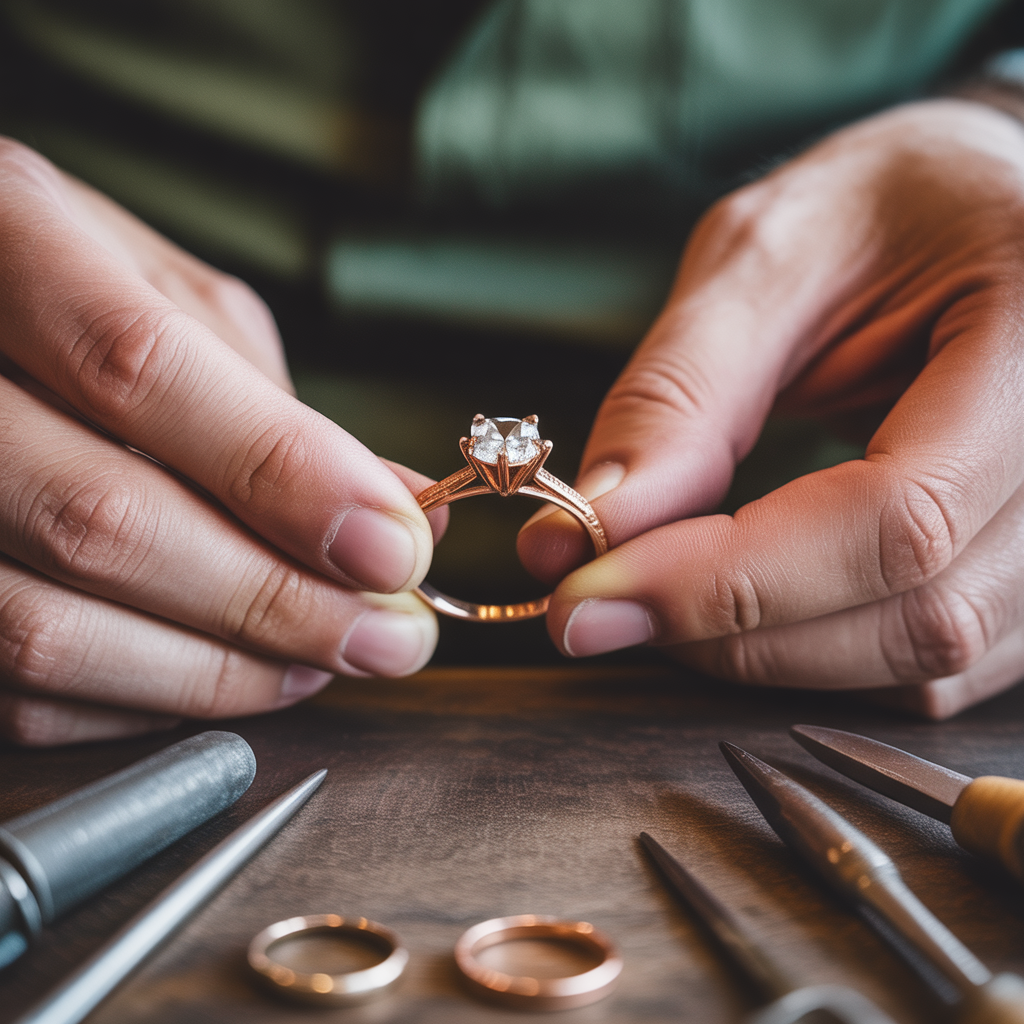How to Resize an Engagement Ring
Introduction
With the right knowledge, you can navigate the resizing process with confidence, ensuring your cherished piece of jewelry continues to symbolize your love.
Definitions
Before delving into resizing techniques, it’s vital to understand some key definitions. Ring resizing refers to the process of changing the circumference of a ring to fit the wearer’s finger better. This can involve either increasing or decreasing the size of the band.
The term “shank” refers to the band of the ring, which is the part that encircles the finger. Knowing these terms will help you communicate effectively with a jeweler regarding your needs.
Key Concepts
There are several key concepts to consider when resizing an engagement ring. First, the type of metal plays a significant role; softer metals like gold can be resized more easily than harder metals like platinum.
Additionally, the type of setting can affect the resizing process. For instance, rings with intricate designs or those featuring multiple stones may require more careful handling to maintain their appearance.
It’s also important to consider the ring’s design. Some rings may need to be altered significantly, while others can be resized with minimal adjustments. Understanding these factors can help you set realistic expectations for the process.
Examples
Resizing examples vary greatly depending on the ring’s initial size and the desired final size. For instance, if a ring originally measures a size 6 and needs to be increased to size 7, the jeweler will typically cut the band, add extra metal, and solder it back together.
Conversely, reducing a ring size might involve cutting out a section of the band and then securely soldering it back together. In some cases, resizing can also involve adjusting the setting to maintain the stone’s security.
Each resizing project is unique, and having examples can guide you in understanding what to expect from your jeweler’s approach.
Pros and Cons
Like any jewelry alteration, resizing an engagement ring has its advantages and disadvantages. On the positive side, resizing allows for a perfect fit, enhancing comfort and wearability. This can be especially important if the ring was a surprise gift, as sizes may not always be accurately guessed.
However, there are potential downsides to consider as well. Frequent resizing can weaken the ring’s structure, particularly if it’s made of a more brittle metal. Additionally, resizing may alter the ring’s original design, which could impact its aesthetic appeal.
Understanding both the pros and cons can help you make an informed decision regarding the resizing of your engagement ring.
Case Study
Consider the case of Sarah, who received an engagement ring from her fiancé. Initially, the ring was slightly too tight, causing discomfort. After consulting with a jeweler, Sarah opted for resizing to increase the ring size by half a size.
The jeweler carefully cut the band, added a small piece of gold, and soldered it back together. After the resizing, Sarah found the ring fit perfectly, allowing her to wear it comfortably every day. This case illustrates the importance of professional help and careful consideration in the resizing process.
Future Trends
The future of ring resizing may see advancements in technology. New tools and techniques may allow for more precise resizing with less impact on the ring’s design. Additionally, the rise of customizable engagement rings could lead to more innovative resizing options tailored to individual preferences.
Conclusion
Resizing an engagement ring is a valuable service that can enhance the ring’s comfort and fit. By understanding the definitions, key concepts, examples, pros and cons, and future trends, you can approach the resizing process with confidence. Whether you’re resizing your own ring or helping someone else, this guide aims to provide clarity and support.
Understanding the Resizing Process
The resizing process can vary significantly based on the complexity of the ring and the desired size change. Jewelers typically begin by assessing the ring’s structure and design, which helps determine the best approach to take. For rings with delicate settings or multiple stones, a jeweler might need to carefully remove the stones before resizing and then securely replace them afterward.
Moreover, the resizing method may differ depending on whether the ring needs to be made larger or smaller. For larger adjustments, jewelers often add a piece of metal to the band, while for smaller adjustments, they may cut and remove a section. Each technique requires precision and skill to ensure the ring maintains its original beauty and integrity.
Choosing a Professional Jeweler
When it comes to resizing an engagement ring, selecting a skilled and reputable jeweler is paramount. It is advisable to seek recommendations from friends or family or to read reviews online. A good jeweler will provide you with a clear explanation of the resizing process and what to expect, including timelines and costs.
It’s also beneficial to inquire about the jeweler’s experience with resizing similar rings, especially if your ring features intricate designs or valuable stones. A professional should be able to handle your ring with care, ensuring that it not only fits well but also retains its original character.
Costs Associated with Resizing
The cost of resizing an engagement ring can vary greatly based on several factors, including the type of metal, the complexity of the design, and the jeweler’s rates. Generally, resizing a simple gold band may be more affordable than resizing a platinum ring with multiple stones.
It is important to discuss pricing upfront with your jeweler to avoid any unexpected expenses. Additionally, some jewelers may offer free resizing services if you purchased the ring from them, so be sure to check your warranty or purchase agreement for any such benefits.
Maintaining Your Ring Post-Resizing
After resizing, taking care of your engagement ring is essential to maintain its beauty and longevity. It is recommended to avoid exposing your ring to harsh chemicals or extreme temperatures, as these can affect the integrity of the metal and any stones.
Regular cleaning and inspections can help ensure that the ring remains in excellent condition. Many jewelers offer cleaning services, and it can be beneficial to have your ring checked periodically to ensure that the settings remain secure and the metal does not show signs of wear.
Emotional Considerations
Beyond the technical aspects of resizing, there are emotional considerations to keep in mind. An engagement ring often carries significant sentimental value, and any alterations can evoke feelings of anxiety or apprehension. It’s important to communicate openly about the resizing process, especially if the ring was a gift.
Consider discussing the resizing with your partner to ensure that both parties are comfortable with the changes being made. This dialogue can strengthen your bond and reaffirm the love represented by the ring.







